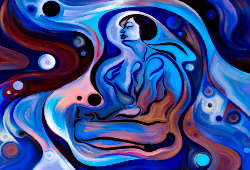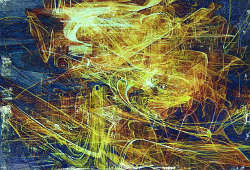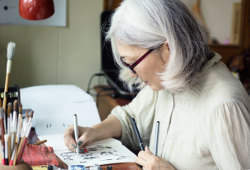Psychotherapeutic Process

The psychotherapeutic process, in global terms, aims to help you exploring your feelings, promote awareness and making changes in your life. The therapist will work with you, to achieve these goals, with the therapist guiding the process and you deciding what, when and how you want to change.
Psychotherapy is a way to help you achieving relief from your emotional suffering, find a direction for your life, and to receive feedback that can facilitate change. In addition, the therapeutic process allows a person experience healthy relationships, personal development work, addressing existential concerns, and learn valuable skills / resources / strategies.
Sometimes people seek help to make decisions about the direction of their lives. Psychotherapy can help people set goals that are consistent with their dreams, values and abilities.
An important aspect of the therapeutic process is the feedback the therapist provides about the impact the patient has on others. Despite this feedback is provided in a gentle way, its’ honesty makes it extremely useful in motivating the person to change.
In psychotherapy, people can learn skills needed for a more satisfying life, and to develop their potential. These skills may include learning how to: communicate with others; resolve conflicts; be more assertive; identifying decision-making strategies; change unhealthy habits. These skills can help people get engage more fully in their lives.
At first, the therapeutic process focuses on the patient's knowledge, in order to get an understanding of what bothers you and determine how to help in the best way. The therapeutic process is specifically tailored to your needs.

People often begin therapy to alleviate symptoms, but perhaps even more compelling is the ability of psychotherapy to help us counter our tendencies to stay in our comfort zones, and to challenge us to open ourselves to the aliveness and dynamism of the ever-evolving now. It can help us tap into our potential and live happier, more meaningful lives.
Psychotherapy is meant to empower us, to help us mature, to stand on our two feet and face whatever comes our way. Therapy is not an easy process. You will feel uncomfortable at times as you examine uncomfortable feelings and their reasons. We all have parts that we don’t want to see, parts that scare us and that we have carefully hidden deep inside. Successful therapy demands that you see what you do not want to see within yourself.
The way in is through vulnerability and allowing our experience to be exactly what is. This is no easy task. It requires commitment, effort, capacity to tolerate difficult emotions, capacity to shift attention to different aspects of ourselves at the right moments, and lots of compassion. It requires dedication and a willingness to be in (inner) places that we haven’t been before, a willingness to be vulnerable.
When we become more aware of the parts of us that we didn’t know existed, we can begin to know ourselves in a more intimate way. In turn, our satisfaction in life increases, because our actions, emotions, and thoughts come into greater alignment. Furthermore, by understanding our unconscious inner conflicts and relational patterning, we begin to lessen their impact on our well-being and our capacity to respond appropriately to life.
We become more finely attuned to what we need and to what is needed at any given moment. It includes all of our being. It includes awareness of our mental, emotional, and somatic (physical) states. It requires uncovering our past beliefs and ideas about reality. It also requires getting to know our limitations and our capacities. In a way, therapy can be an adventure into our inner landscapes, a process in which we are willing to be transformed by self-discovery.

Art-Psychotherapy
Art-Psychotherapy is a psychodynamic kind of psychological intervention that in addition to the verbal expression integrates art mediators in its context.
In a session of art-psychotherapy, in a particular moment, the patient has access to art materials (such as pastel pencils, paints, plasticine, clay, sand tray and others), through which the person can express nonverbally.
The resulting creation is further explored verbally and serves to support the understanding of the inner world of the patient. Like other psychotherapies, art- psychotherapy seeks to bring to a conscious level unconscious aspects, in a safe container and environment. These features facilitate emotional expression, freeing the ability of thinking and creativity. (Carvalho, R.)
It is important to notice that art as a tool applied to the clinic, is a process closely guided, where the triad therapist, patient and creation are inextricably linked in a context with a specific purpose of catharsis, suffering expression and elaboration of feelings, deconstructing thoughts and behaviors’ patterns. There is a break of paradigms concerning their experiences in order to develop new healthier patterns, creating new opportunities and building a new reality that can provide the meeting of the self as essence.

The artistic creative expression and the use of imagination in the context of psychotherapeutic relationship enhance the insight and the development of a sense and meaning to personal experiences, paving the way for personal transformation.
Through creating art and reflecting on the processes and artwork result, people can broaden the knowledge of self and others, improve their self-esteem, cope better with symptoms, stress and traumatic experiences, develop physical, cognitive and emotionally, and enjoy the vitalizing pleasure of making art.
It is suitable for all age groups and it is important to note that you do not need artistic skills since the objective is not aesthetic.

The type of procedure to be used will depend on the life history of the patient , their clinical complaints , as well as their interests, propensities and limitations. Each case is unique , and it is necessary to perform an entire custom procedure for each patient.

Family Therapy
Family therapy aims to help families achieve better understanding and reciprocal support, making the family relationship more rewarding for all its members.
Family therapy encourages family members to express their perspectives, emotions and thoughts in a safe and protected environment, with the help of a family therapist, as well as the positive contribution that each person can make to the family.
Families can be compared to the human body. When we hurt a part of our body, the other parts can also be affected. But all parts of the body are important in solving the problem, so families should also work together when something is causing distress and discomfort.
Throughout the vital evolutionary cycle, Families are vulnerable to crises that impel them to growth, to reach more mature maturative states. It is understood, therefore, that crisis causes temporary rupture and instability in the family system, but also creates a need for a reorganization of the interrelationships and a discovery of new rules of family functioning. Sometimes families need support to overcome crisis situations, improve communication, redefine new rules, norms, and roles in the relationship in order to regain harmony and a taste for being together.

Often families are exposed to circumstances that cause a lot of stress and suffering, and that require changes on the part of the family. These situations may be related to health situations, employment, moving house, difficulties with children, mourning, cultural adaptations, etc. In a psychotherapeutic environment, families can be helped to talk about difficulties and find resources to overcome them. In these situations, Therapy intends to collaborate with families in the transformation of the way they live and relate, allowing the various members of the family to share their perspective on the problem, as well as their contribution to the resolution of the same. Family therapy aims to respond to family needs by exploring and reorganizing its resources. We want the family to turn the crisis into an opportunity for change, helping them to find meaning in adversity.
Many of the family problems are maintained or increased by communication difficulties. Family therapy helps the family communicate clearly, express emotions, and collaborate in problem solving.
Family therapy respects the importance of each person's beliefs, culture and life experience, and the intervention is adapted to the type of family: single parent, reconstituted, as well as the ages, preferences and needs of each family.
Family therapy can intervene in different areas:
Parenting
This area is focused on the parents / children relationship and aims to help the family understand the needs of children and young people and to reflect and adopt the most appropriate attitudes to develop their potential. There are situations of conflict, loss of authority on the part of parents, difficulty in establishing limits to children, initial addictive behaviour situations: alcohol, drugs, gambling.
Couple Therapy
Building the couple relationship contains many challenges: separation of the family of origin, definition of the individual and couple space, birth and growth of the children. In addition to these tasks that the couple has to perform, other problems often arise that cause anguish, conflict and trigger a crisis in the couple: infidelity, physical or mental health problems of one of the spouses, unemployment or moving house.


